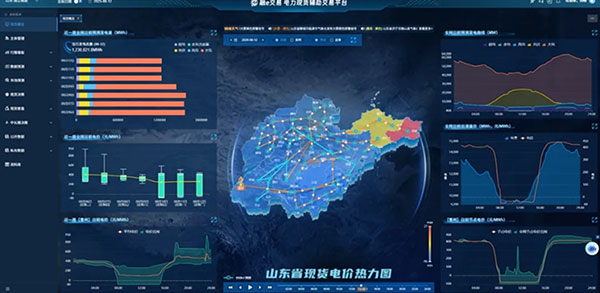SPIC Shandong: Driving Marketing Innovation with Smart Solutions to Expand Market Horizons
SPIC Shandong is actively advancing and deeply engaged in the development of Shandong's electricity market. Leveraging digital and intelligent transformation, SPIC Shandong's Electricity Trading Center has deployed a series of initiatives, including proactive market engagement and AI-powered trading algorithms, successfully achieving increases in both volume and price. From January to June this year, SPIC Shandong's settled electricity prices for wind and solar power ranked among the top, leading to significant overall revenue growth.
Smart Trading Enables Precision Decision-Making: Exceptional Performance in Inter-Provincial Spot Market
"In the past, trading relied heavily on experience and judgment. Now, AI algorithms can predict price trends in real time, allowing us to place orders with precision. This marks a real shift from 'human-led' to 'intelligence-driven' trading," remarked Wang Xingxing, a trader at SPIC Shandong's Electricity Trading Center, when submitting day-ahead market bids.

SPIC Shandong has organized trading strategy algorithm competitions and introduced over ten sets of AI algorithms. Leveraging deep learning on historical trading data and spot market insights, these algorithms accurately identify price fluctuation patterns and predict short-term supply-demand changes, supporting traders in formulating more precise bidding strategies to maximize returns. This capability has driven exceptional performance in the inter-provincial spot market. The company has actively integrated into the power market system, deployed AI-assisted decision-making systems, managed the volume and price of medium- to long-term contracts, and actively participated in the inter-provincial spot market—achieving synergistic growth in both trading volume and price. Data-driven spot market strategies have significantly increased revenue.
Optimized Coordination Mechanisms: Data-Driven Solutions Overcome Barriers
Given the high-frequency trading nature of the Shandong electricity spot market, the marketing department needs real-time access to production data—including generation capacity and costs—to accurately determine medium- and long-term contract volumes, set day-ahead bidding parameters, and develop pricing strategies. Meanwhile, the production department needs to flexibly adjust operational approaches based on market price forecasts, focusing on generating "high-value electricity" rather than merely "increasing output," thus maximizing overall profits.

SPIC Shandong has established a highly coordinated and synergistic production-marketing mechanism, alongside the implementation of multiple management systems with clear performance targets. This ensures seamless alignment between maintenance schedules and spot trading activities, driving further improvements in overall benefits. To address performance gaps in standalone energy storage systems, the marketing and production departments jointly launched a targeted initiative, identifying and resolving issues related to cooling energy consumption and battery performance to boost revenue.
Precision Actions through Tariff Analysis: Policy Marketing Drives Change
In June 2024, SPIC Shandong conducted a comprehensive tariff analysis across 36 solar power stations. This innovative analysis quantitatively broke down tariffs from four dimensions. By breaking down the tariff structure of each station on a monthly basis, the initiative clarified business contributions, effectively reduced losses and increased revenue, and promoted coordinated development across regional units. Beyond improving individual stations' operational profitability, this effort enabled the company to establish a holistic tariff analysis and management framework.

As the sole representative of power generation enterprises in Shandong, SPIC Shandong has actively engaged in top-level power policy formulation, leading the drafting of implementation rules for Shandong's renewable energy electricity pricing mechanism, and advocating for mechanisms like energy storage capacity pricing and competitive allocation for new energy projects.
